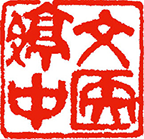Until the Song dynasty [960-1279 AD] the Chinese name for Ginkgo was ‘duck foot’ 鴨腳, referring to the shape of its leaves. The kernel was called ‘duck foot seed’ 鴨腳子, which was changed to ‘Silver Apricot’ 銀杏 for the purpose of its presentation to the Imperial ruler. It was determined that ‘Silver’ was auspicious and that ‘Duck Foot’ was not. During the Ming period [1368-1644] the term for the shell-like sclerotesta and inner parts was ‘Silver Fruit’ 銀果 or Yin Guo, and White Fruit 白果, Bai Guo, which remains Ginkgo’s name in China and in Chinese medicine today.

Gingko Seeds • Photo© Wendy Brown
Pictured, are a few fetid-smelling, squishy, picture-perfect Ginkgo berries I collected from a female tree during the second week of December of 2014. The nuts have a slightly poisonous quality and thus, should not be taken in large quantities or for prolonged periods of time. The medicinal nature of Bai Guo astringes, stabilizes and binds, treating Lung and Kidney with sweet, bitter, astringent, and neutral properties. In Chinese medicine, Ginkgo is helpful in nourishing cognitive and nervous system disorders, while calming Shen and nourishing Jing.
![]()
Wellness and Best Wishes to All



